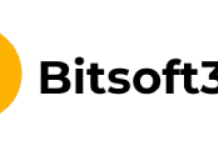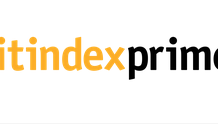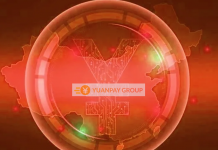 Co-founder & Scientist at DAGLabs, a company dedicated to the research and development of DAG protocols for blockchain-based projects and platforms, Yonatan Sompolinsky is a PhD candidate at the Rachel and Selim Benin School of Computer Science and Engineering at the Faculty of Science, the Hebrew University of Jerusalem. Focusing on Networks, Algorithmic Game Theory, and Bitcoin in his research work, Yonatan founded DAGLabs to scale up Layer One of blockchain in terms of transaction throughput and confirmation times.
Co-founder & Scientist at DAGLabs, a company dedicated to the research and development of DAG protocols for blockchain-based projects and platforms, Yonatan Sompolinsky is a PhD candidate at the Rachel and Selim Benin School of Computer Science and Engineering at the Faculty of Science, the Hebrew University of Jerusalem. Focusing on Networks, Algorithmic Game Theory, and Bitcoin in his research work, Yonatan founded DAGLabs to scale up Layer One of blockchain in terms of transaction throughput and confirmation times.
In advance of his talk “Bridging the gap between untrusting devs and trust-seeking users” at Blockchain: Rethink Trust in Amsterdam on June 29th, we spoke to Yonatan about the role of research in the blockchain space, blockchain use cases and lessons learnt that can be adopted by enterprises piloting blockchain systems in existing verticals.
GET 15% OFF WITH COMPARIC.COM PROMO CODE!
1. How did you get into the blockchain technology?
My advisor Aviv Zohar suggested it to me as a lab project. The project turned into a research paper and a thesis. The community showed lots of interest in our GHOST protocol and this line of thought, and this encouraged us to work hard on developing the POW based DAGs as a more powerful and holistic solution than blockchains. The latter makes my PhD dissertation.
2. What makes it a great research topic, and how does it translate into business applications?
It’s a field where a theoretic achievement can immediately be implemented as a working system. The problems we deal with can be explained in simple language, and therefore it brings together researchers from various disciplines within CS, such as Algorithmic game theory, Security, Cryptography, and increasingly outside CS as well, e.g. Financial engineering, Business school, etc.
The role of research in this space is twofold. The more obvious one is to come up with creative solutions to existing challenges of the technology. For example, my research with Aviv Zohar in The Hebrew University focused on solving core scalability limitations of Satoshi’s system. This research (as well as other proposals by different groups) is immediately applicable to business applications that require access to an open permissionless digital money platform that serves payments fast.
The second role of research, which is sometimes overlooked, is to explain the technology, to refine the underlying model (especially in the context of various trust assumptions), to put it in some formal context. While such efforts may not translate to a specific business application, they are vital to the industry as a whole, as they provides a way to talk — and to think — about what sort of use cases are relevant to this technology.
3. Why DAGs vs chains?
First, DAG is simply a generalization of a chain. You can literally simulate any chain protocol using a DAG, and so you lose nothing by turning your attention to DAGs. Now, you can gain lots of benefits by designing DAG protocols that utilize its structure: Let’s take it to the extreme, just to get intuition. Imagine a scalable POW based system where the miners-network mines 1000 blocks per second. It is easy to imagine how the chain paradigm would break apart in these rates. In contrast, the DAG protocols we’ve developed in The Hebrew University (SPECTRE/PHANTOM), harvest the power of all blocks that were mined and incorporates them into one massive ledger, a BlockDAG. So scalability is an immediate benefit that is easy to explain. Other benefits include greater decentralization, mitigation of strategic mining, better Layer Two compatibility (due to the elimination of forks), and more.
4. What lessons from the protocol research you advance are most applicable to the enterprises and consortiums adopting and piloting blockchain systems in existing verticals?
The lesson I got from my research path is that defining precisely the desired properties of the system is crucial in order to get even near an optimal solution. Ordinary POW protocols — including the DAG ones that I’ve coauthored — assume almost nothing about the system. This highly limits the performance relative to traditional systems. In contrast, if you allow yourself to assume even a little bit of trust, or a little bit of centralization – this bit can boost your performance and capabilities by orders of magnitude. In fact, many blockchain protocols knowingly or unknowingly assume such things in order to patch the protocol. This lesson has immediate application to the enterprise space. Any permissioned/consortium blockchain project should begin not with a solution rather with a set of concepts that define the assumed trust and trustlessness between the participating parties, and the problem that needs to be solved. Only then can an intelligent discussion be made regarding the relevant solution space and the optimal solution, be it a blockchain, a P2P network that uses some cryptography, or a traditional database.
5. What is most interesting for you at Rethink Trust?
The question of why we trust institutions, apps, software companies, banks is obviously instrumental to the value proposition of the crypto/blockchain space. Satoshi’s protocol was an amazing theoretical achievement – enabling and incentivizing consensus between participants in an open and anonymous network that do not trust each other and which may have conflicting interests. However, the scope of use cases of this “total trustlessness” paradigm is highly limited, because ordinary people and end users favour convenience over privacy and are more than willing to trust institutions and to delegate responsibility to them. Therefore, if mass adoption and real world use cases is a goal, we must rethink trust…
I believe that the more interesting use cases will come from hybrid systems where the platforms are permissionless, and above them trusted entities and centralized service providers which individual users choose to trust operate. The permissionlessness and openness of the base-layer then guarantee that users across different networks and “trust zones” are still able to communicate, to transfer data and value, and that users are not “prisoners” of the apps or service provider they chose to trust and can opt out at will.
Don’t miss Yonatan Sompolinsky at Blockchain: Rethink Trust on June 29th in Amsterdam. Book your ticket now. Use the COMPARIC_BRT18 code and get 15% discount!




![Mayrsson TG Reviews: Why Choose Crypto-Trading with Them? [mayrssontg.com]](https://comparic.com/wp-content/uploads/2023/12/image1-218x150.jpg)













